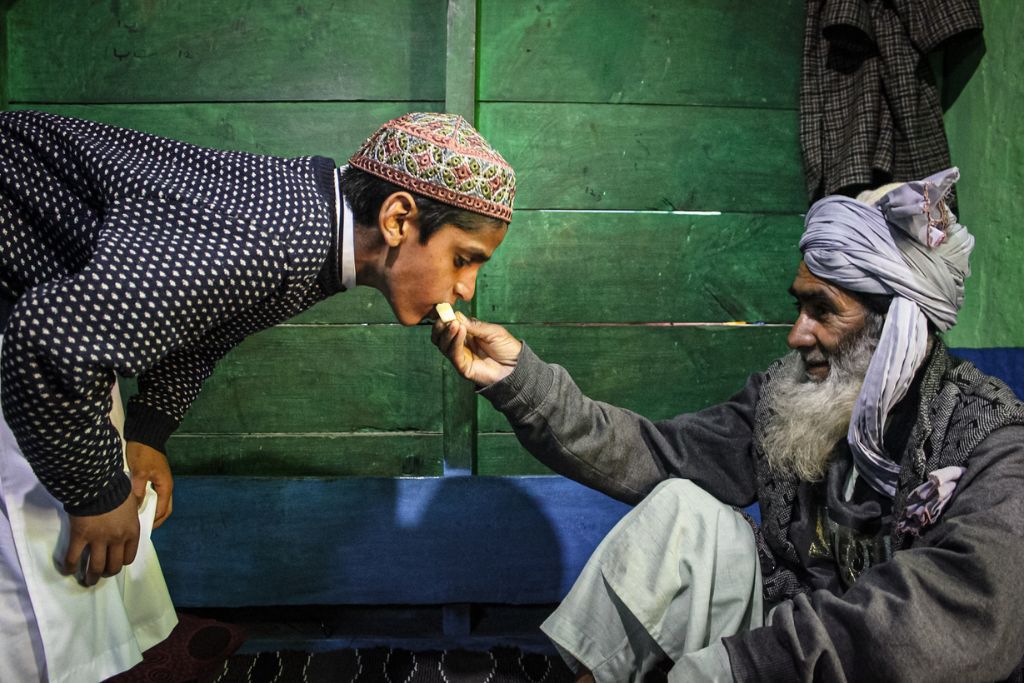
Peep into the Eid celebrations of Kashmir’s Gujjar tribe
"Eid aaye rase rase, eid-gah waes waey (Steadily, steadily Eid has arrived, let’s go to eidgah)..." As the holy month of Ramadan comes to an end, Kashmir’s Gujjar tribe gathers to celebrate three days of Eid in the most colourful way.
The celebration in the kothas (mud and wood house), where the Gujjars and Bakerwals reside, is a cherished tradition marked by bustling activity in homes in the days preceding the festival. Houses undergo a thorough cleaning and delectable delicacies are lovingly prepared. Heemal (56) tying a turban on his 13-year-old son Rashid before heading towards Eid prayers held in a local mosque in Bonyar village, Bandipora district
Saira (13) ties a baby goat with a rope while Umar (11) plays with a toy car on the first day of Eid ul Fitr outside their home in the uphills of Bandipora district. Eid for Gujars is not only about festivities, but also preserving their rich cultural heritage. They celebrate the festival with great enthusiasm to stay close to their families and cultural root (Photo by Mohsin Mushtaq)
Young girls adorn their hands with henna, while children eagerly await the festival’s arrival. Women stitch traditional dresses and skull caps of vibrant colours, which they wear at the break of dawn on Eid (Photo by Mohsin Mushtaq)
The festivities commence with people offering two rakat of Eid prayer, which is a way of expressing gratitude to Allah for bestowing the blessing of Eid upon them. Amidst the sounds of Takbeer (praising Allah) echoing through the winding paths, men wearing their best clothes and the fragrance of the finest oudh (essential oil), make their way to the Eidgahs, which are open spaces of worship, early in the morning (Photo by Mohsin Mushtaq)
A group of Gujjar boys dressed in new clothes praying outside a graveyard in the Hampathri area of Bandipora District. It is considered a ritual to pray for the deceased during Eid celebrations (Photo by Mohsin Mushtaq)
After the prayers, on the way back to their homes, people greet each other with hugs and warm wishes of “Eid Mubarak.” The aroma of a sumptuous feast of traditional dishes such as rogan Josh, goshtaba, kashmiri rajma, naat yakhni, modur pulao, aab gosht, and tabak maaz welcomes them home (Photo by Mohsin Mushtaq)
Amidst all the celebrations and arrangements, children are perhaps the most excited about the onset of the festival. The morning of Eid gives them a chance to don new attire and pester the adults for eidi – a cash gift handed out to children on the morning of eid (Photo by Mohsin Mushtaq)
“After fasting for the entire month of Ramadan, it is time for us to come together with our families and enjoy the delicious food and sweets,” said a member of the Gujar tribe, while expressing his gratitude to Allah for his blessings (Photo by Mohsin Mushtaq)
Throughout the upper reaches of Kashmir, with colourful parades and bustling markets showcasing the unique cultural traditions of the Gujjar community, Eid celebrations continue for two days. Known for their love of music and dance, the Gujjars perform traditional songs and dances, creating a festive and joyous atmosphere (Photo by Mohsin Mushtaq)
The lead image at the top shows Eid being celebrated in a small village of Bandipora (Photo by Mohsin Mushtaq)
Mohsin Mushtaq is a freelance journalist based in Srinagar.








